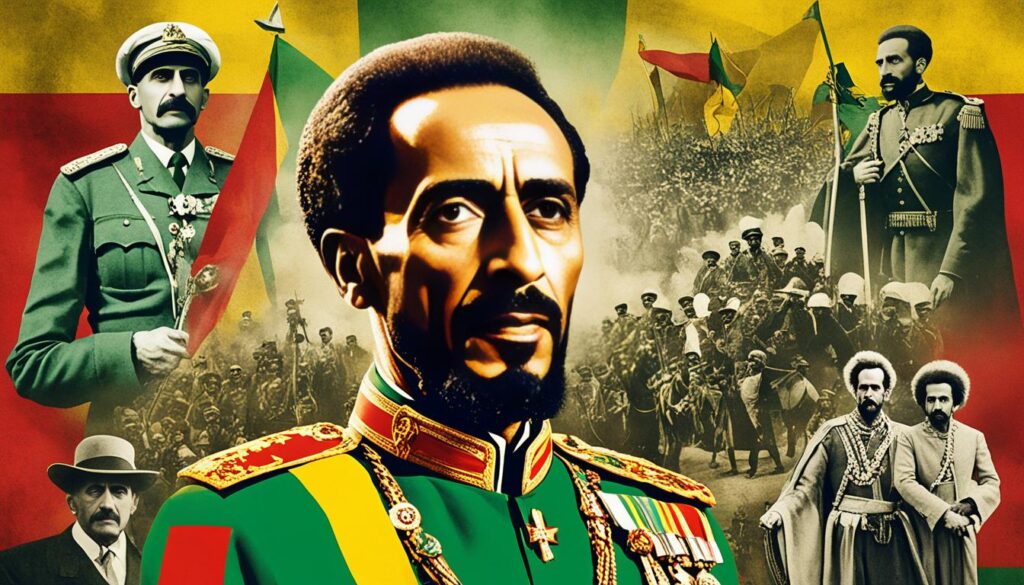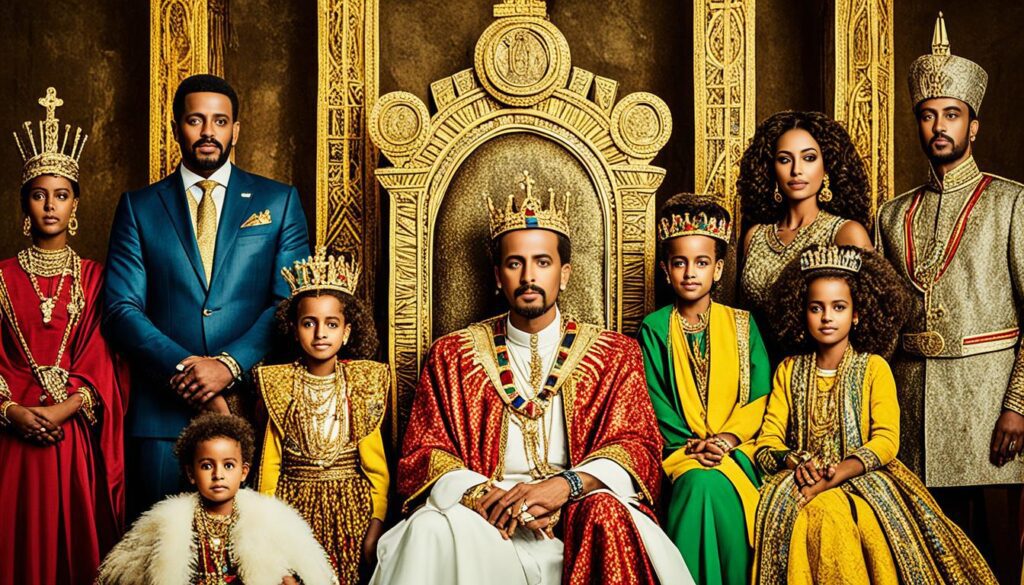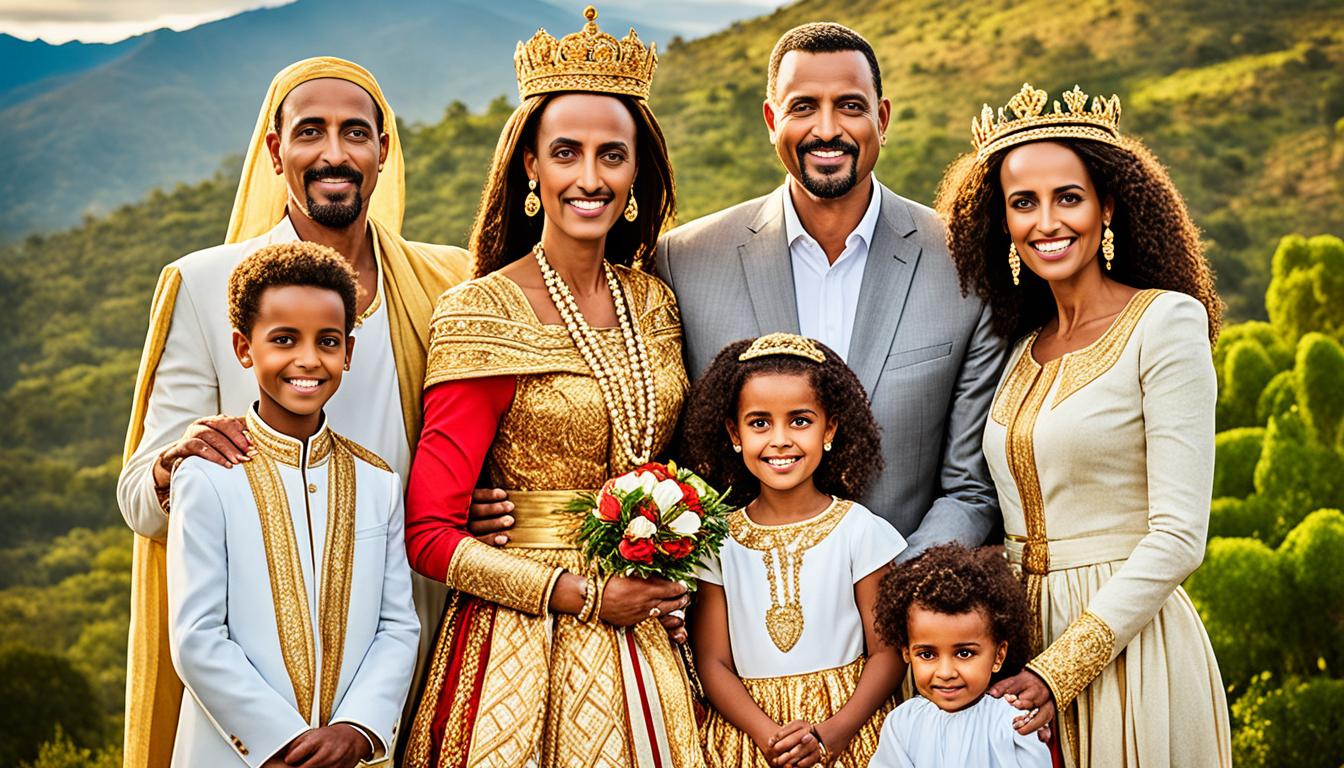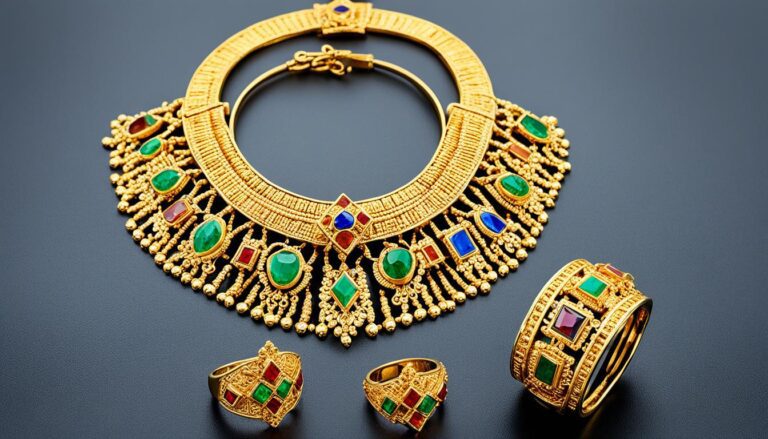Does Ethiopia Have a King?
Did you know that Ethiopia has a rich history of kings and emperors who have ruled the country throughout different dynasties? From Menelik I, the first emperor of Ethiopia, to Haile Selassie, the last emperor, the country has seen a succession of royal leaders who have shaped its culture, religion, and politics. But does Ethiopia still have a king today?
In this article, we delve into the fascinating world of Ethiopian kingship and explore the legacy of the Ethiopian royal family. We’ll take a historical journey through the reigns of powerful kings and emperors who made their mark on Ethiopia’s identity and uncover whether there is a current king reigning over this diverse and historic land.
Key Takeaways:
- Ethiopia has a rich history of kings and emperors who have ruled the country throughout different dynasties.
- The Ethiopian monarchy, also known as the Solomonic dynasty, dates back to ancient times.
- Haile Selassie, the last emperor of Ethiopia, implemented various reforms and modernization efforts during his reign.
- The legacy of Ethiopian kingship extends beyond the reigns of individual monarchs and continues to shape the nation’s culture and traditions.
- While there is no current king reigning over Ethiopia, the impact of the monarchy can still be seen and felt throughout the country.
The Ethiopian Monarchy: A Historical Overview
The Ethiopian monarchy, also known as the Solomonic dynasty, holds a prominent place in the country’s rich history. With origins dating back to ancient times, the monarchy traces its lineage to Menelik I, who claimed to be the son of the Queen of Sheba and King Solomon. Throughout centuries, the kings and emperors of Ethiopia have played significant roles in shaping the nation’s culture, religion, and political landscape.
From the powerful Axum Empire to the Zagwe dynasty, and ultimately the establishment of the Solomonic dynasty, the Ethiopian monarchy has witnessed a succession of royal leaders who were believed to have divine lineage. These kings and emperors were regarded as the chosen custodians of the land, responsible for the welfare and prosperity of their people.
One notable aspect of the Ethiopian monarchy is its integration of Christianity. Ethiopia stands as one of the first countries to adopt Christianity as the state religion in the 4th century CE. As the emperors of Ethiopia were seen as direct descendants of biblical figures, their rule carried both political and religious significance.
“The Ethiopian monarchy’s divine lineage bestowed upon the kings and emperors a unique authority and legitimacy, elevating their positions beyond mere mortal rulers.”
The Ethiopian monarchy reached its zenith under the Solomonic dynasty, which began in the 13th century and continued until the overthrow of Emperor Haile Selassie in 1974. During this time, Ethiopia experienced periods of expansion, cultural flourishing, political upheavals, and encounters with European colonial powers.
To gain a better understanding of the Ethiopian monarchy and its historical significance, let’s explore a table that highlights key periods and rulers:
| Period | Ruler | Significance |
|---|---|---|
| Axum Empire (c. 100-940 CE) | King Ezana | Adopted Christianity as the state religion; expanded territory |
| Zagwe dynasty (c. 940-1270 CE) | King Lalibela | Constructed the famous rock-hewn churches of Lalibela |
| Solomonic dynasty (1270-1974) | Emperor Haile Selassie | Promoted modernization; ruled during periods of political and social transformation |
As history progressed, the Ethiopian monarchy had its fair share of challenges and crises. However, it left a lasting legacy on the country’s identity, religious beliefs, and cultural practices. Even though Ethiopia is now a federal republic, the influence of the monarchy can still be seen today, whether in the religious ceremonies, traditional customs, or the reverence for the historic monarchs.
Through their divine lineage, the Ethiopian kings and emperors have created a tapestry of heritage that continues to shape the fabric of Ethiopian society. In the next section, we will delve into the reign of Haile Selassie, the last emperor of Ethiopia, and explore his impact on the nation.
The Reign of Haile Selassie: The Last Emperor of Ethiopia

Haile Selassie, also known as Ras Tafari, holds a significant place in the history of Ethiopian kings and emperors. He ascended to power in 1930 and remained the emperor of Ethiopia until 1974 when a military coup toppled his rule. During his long reign, Haile Selassie instituted numerous reforms and modernization efforts that transformed the country.
One of Haile Selassie’s notable achievements was the establishment of a parliamentary system in Ethiopia, bringing about a more participatory form of governance. This move aimed to decentralize power and ensure representation from various regions and ethnic groups within the country. Additionally, he abolished slavery, reinforcing Ethiopia’s commitment to human rights and equality.
Recognizing the importance of education and healthcare, Haile Selassie implemented reforms in these areas as well. He prioritized educational opportunities for all citizens, expanding access to schools and universities. The emphasis on education aimed to equip the Ethiopian populace with the skills and knowledge needed for social and economic advancement.
Furthermore, Haile Selassie took measures to improve healthcare services and infrastructure throughout Ethiopia. He facilitated the establishment of hospitals and clinics, especially in rural areas, to ensure that quality healthcare was accessible to all citizens.
However, despite his accomplishments, Haile Selassie’s later years in power were marked by economic challenges and political unrest. Growing discontent among the population, coupled with a struggling economy, led to widespread dissatisfaction with his government. The military coup in 1974 eventually ended his reign as the last emperor of Ethiopia.
“Throughout his life, Haile Selassie strived to modernize Ethiopia and uplift its people. His extensive reforms in governance, education, healthcare, and the abolition of slavery left an indelible mark on Ethiopia’s history and society.”
Haile Selassie’s reign as the last emperor of Ethiopia represents a significant era in the country’s history. While his rule faced its share of challenges, his efforts to modernize Ethiopia and improve the lives of its citizens cannot be overlooked. Today, Haile Selassie’s legacy continues to shape Ethiopia’s path as it builds on its rich heritage and moves towards a progressive future.
Selective Achievements of Haile Selassie:
| Achievement | Description |
|---|---|
| Establishment of a Parliamentary System | Introduced a participatory form of governance to decentralize power and ensure representation. |
| Abolition of Slavery | Implemented reforms to eradicate slavery and promote human rights and equality. |
| Education Reforms | Expanded access to education, including schools and universities, to empower Ethiopian citizens. |
| Healthcare Improvement | Built hospitals and clinics, especially in rural areas, to enhance healthcare services. |
The Legacy of Ethiopian Kingship

The legacy of Ethiopian kingship goes far beyond the reigns of individual monarchs. Throughout history, Ethiopian kings and emperors have left an indelible mark on the country’s identity, culture, and political structure. Their rule has shaped Ethiopia into a nation with a rich cultural heritage, deeply influenced by Christianity, traditions, and beliefs that have been passed down through generations.
From the founding of the Solomonic dynasty by Menelik I to the reign of Haile Selassie, the last emperor of Ethiopia, the Ethiopian royal family has played a pivotal role in the country’s history. The kings and emperors of Ethiopia were revered as leaders with divine lineage, carrying the responsibility of guiding their people and upholding ancient traditions.
This enduring legacy can be seen in Ethiopia’s vibrant religious practices, including the Ethiopian Orthodox Church, which holds a central position in the lives of millions of Ethiopians. The Ethiopian royal family has long been associated with the preservation and promotion of Christianity in the region, acting as custodians of sacred artifacts and traditions.
In addition to their religious influence, Ethiopian kings and emperors have shaped the political landscape of the country. They introduced legal systems, established diplomatic relations with other nations, and shaped Ethiopia’s territorial boundaries. The legacy of their governance continues to impact the country’s political structure, with elements of traditional rule intertwined with modern democratic systems.
“The royal lineage of Ethiopia has served as a unifying force for the nation, providing a sense of continuity and pride for its people. The Ethiopian royal family is deeply ingrained in our culture and collective memory, symbolizing the strength and resilience of our nation.”
Today, although Ethiopia is a federal republic, the influence of the monarchy persists. The Ethiopian royal family remains an integral part of the nation’s history and cultural heritage. Their legacy is celebrated in festivals, art, and literature as a testament to the enduring impact of their rule.
Conclusion
The Ethiopian royal family and the history of Ethiopian kings have left an indelible mark on the country’s culture and identity. For centuries, a succession of kings and emperors ruled over Ethiopia, shaping its traditions, religion, and political landscape. Although the monarchy was abolished in 1975, its legacy continues to resonate throughout the nation.
Today, Ethiopia is a federal republic, led by a president and a prime minister. While there is no current king reigning over the country, the influence of the royal family can still be observed in various aspects of Ethiopian life. From the vibrant festivals that celebrate ancient traditions to the majestic palaces that stand as a testament to a bygone era, the legacy of the Ethiopian kingship is ever-present.
The history of Ethiopian kings is deeply tied to the country’s rich cultural heritage. The royal lineage, believed to trace its origins back to the Queen of Sheba and King Solomon, carries a sense of divine connection and reverence. This historical connection has shaped Ethiopia into a nation that proudly embraces its ancient roots and traditions.
As Ethiopia continues to grow and evolve, the history of Ethiopian kings remains an important part of its national narrative. The impact of the monarchy can be felt in the customs, traditions, and values that define Ethiopian society. The Ethiopian royal family may no longer hold the throne, but their legacy lives on, keeping alive the spirit of a rich and storied history.




